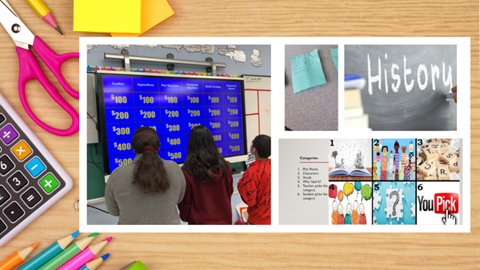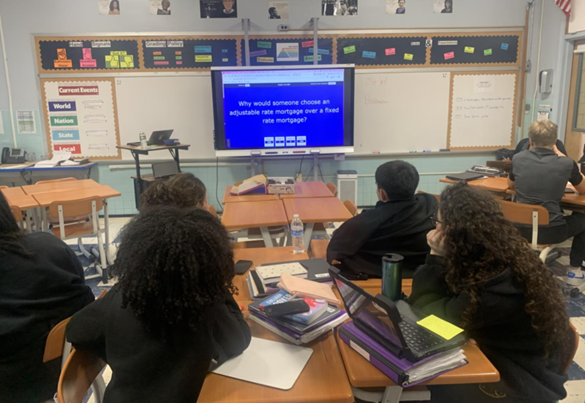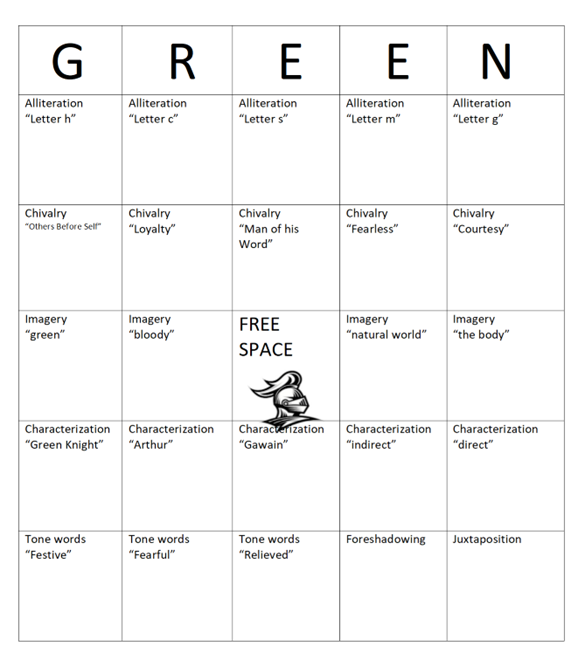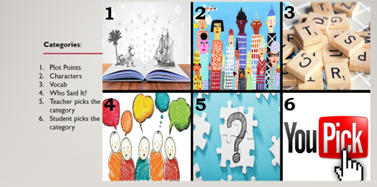7 Teacher Created Review Games That Improve Learning in Social Studies & English Language Arts

Let's face it; everyone loves to win. Everyone also enjoys fun. So why not introduce those two elements into the classroom experience with games? The magic of games in learning comes from their ability to engage, challenge, and reinforce previously taught skills and content. For this reason, they cannot be dismissed as time-wasting diversions from precious learning time. Games are not just about fun; they help teachers build connections between the rigors of learning and the satisfaction of achievement, while also reducing forgetting.
Teachers put countless hours into preparing classroom lessons and teaching new concepts. So how is it that weeks later, student assessment results demonstrate little evidence that anything has been taught? That's because students forget. For students to excel on assessments weeks or months removed from the lesson, it's important that teachers shift from short-term memory tactics and find ways to make what they teach stick. In addition to preparing well-planned engaging lessons, teachers must also consistently invest time into strengthening students’ information recall ability. Games can help with this.
With gamified learning, teachers revisit key concepts with students in a fun and interactive way, and tap into students’ memory banks. A recent cohort of Rutgers Alternate Route teachers designed low-tech classroom games aimed at stimulating student memory retention. These games use exciting and entertaining review formats to encourage information recall. Free for all to access, these games come with instructions and images for easy adaptation for all subjects and grade levels.
Read on below to browse each teacher-designed game and access instructions.
Social Studies and History
Head Band

Head Band by Paul Boboc is a self-designed game of headband for 10th-grade US History 1 students to review early US history concepts in a fun and engaging way. Paul’s game covers various US History 1 standards, including the Columbian Exchange, the Declaration of Independence, and interactions between Native groups and settlers. However, the game can be used to review other history concepts as well.
Game Objective & Instructions
The game is played in groups of six, with three groups in total. The teacher pastes words related to early US history on post-it notes and sticks them to the students' foreheads. The other group members give clues to help the person with the post-it guess the word. The group that requires the fewest clues to guess correctly earns the most points. The group with the fewest points wins the game and gets five extra points on the test, while the second and third-place groups get three and two extra points, respectively.
A Migration Adventure Game

A Migration Adventure Game by Donna Jackson is a game designed for 10th-grade US History 1 students to prepare for their unit exam. The game aims to be enjoyable and fun for all participants. The game focuses on explaining how the geographies and climates of Asia, Africa, Europe, and the Americas influenced their economic development and interaction or isolation with other societies.
Game Objective & Instructions
In this game, players will have the opportunity to answer questions and engage in different activities to earn points. The directions include making a multiple-choice or true or false selection, identifying hidden objects, naming objects, and analyzing a primary source artifact from antiquity. Players are encouraged to take out a sheet of paper to keep track of their score, with each correct answer earning them 10 points. Students are able to win up to 180 points total.
Social Studies Jeopardy

There are many ways to review and reinforce learning in the classroom, and one popular method is through games. In this case, we will focus on the game Jeopardy, created by Anthony Parisi which is designed for high school students to apply their knowledge related to personal finance topics. The game covers various standards related to personal finance, including debt, mortgages, credit history, credit scores, and financial decision-making.
Game Objective & Instructions
Students form groups of 4-5 and each group has a spokesperson. Groups select categories and amounts for questions. They have 20 seconds to answer, and correct answers earn points, while incorrect or no answers result in point loss. Other groups can steal the question with no additional time. The game continues until all questions are played, and a winner is determined. The game helps students prepare for any test or quizzes and the Jeopardy format is preferred by the students for in-class review.
English Language Arts
Figurative Language Review

Figurative Language Review, by Aileen Torres is a game designed to help students in bilingual ELA review the skills of tone and meaning in text. The game aims to make the learning experience enjoyable and rewarding for all students while reinforcing their understanding of figurative language.
Game Objective & Instructions
The game is played in tiered teams, with Team A consisting of strugglers who receive Spanish support, Team B with medium difficulty and Spanish support, and Team C consisting of high learners. Before playing, students work in groups to create questions, ensuring that complex examples are included and that all students have a clear understanding of the anchor chart resource. Representatives from each tier collaborate to create and edit questions, as well as discuss examples of figurative language. The game is played using the Blooket platform, where students access their assigned team link and create a free account. Questions have been collaboratively created by the teacher and representative students from each tier, with Spanish translations available for the lower and middle levels. Students have the option to add pictures to their questions. Each question has a time limit, with lower-level students given more time per question. After each correct response, students can play a quick computer game to improve their score before moving on to the next question.
Middle School English Language Arts Jeopardy

Jeopardy is a popular game show where contestants compete to answer questions in various categories and earn money for correct answers. In this particular version on Jeopardy by middle school English teacher Julie Situ. The game reviews key concepts such as appositives, conflict, RACE strategy, plot structure, and paragraph structure. It reinforces these concepts through questioning, analysis, and sentence creation.
Game Objective & Instructions
The class is divided into two teams, and each team takes turns choosing questions and dollar amounts. The team that raises their hand first gets to answer first. Correct answers earn the designated dollar amount on the scoreboard, while incorrect answers give the other team a chance. If both teams are wrong, the question remains on the board. Answers must be in question form to be considered correct. After answering all the questions, the game proceeds to Final Jeopardy! Teams decide how much to wager, and a correct answer adds that amount to their score, while an incorrect answer deducts the wagered amount. Every person must participate in some way, such as speaking, writing the answer, or keeping score. The requirement to answer in question form encourages students to think differently, similar to the RACE strategy. No point deductions for incorrect answers prevent discouragement and encourage students to participate actively.
Sir Gawain and the Green Knight Bingo Review Game

The Sir Gawain and the Green Knight Bingo Review Game was created by middle school English teacher Megan Thompson. This game is designed to help students review and reinforce their understanding of literary elements and characterizations in the epic poem Sir Gawain and the Green Knight. By playing this game, students will have the opportunity to identify literary devices, support their answers with textual evidence, and gain a deeper understanding of the symbolism and message of the poem. It can be played to reinforce any concepts taught in English.
Game Objective & Instructions
The game is played with 11 players, and each student receives a bingo board with categories such as alliteration, chivalry, imagery, characterization, and tone words. The teacher randomly calls out a square on the board, and students find an example in the text that matches the literary device called out. The first student to raise their hand and correctly provide an example and explanation of its significance to the poem earns the bingo square.
Virtue & Vengeance

In Joseph Breen’s English class, students play the game Virtue & Vengeance to learn about important literary elements like characterization. He helps his students explore the theme of forgiveness by reading and analyzing Charlotte Bronte's Jane Eyre. The central question he poses is "What does it take to forgive?" Through this exploration, students examine human motivations to forgive, grow, and move on from trauma. Here’s how we made a game out of it.
Game Objective & Instructions
First, the game can be played to reinforce any key ELA concepts, including plot points, character motivations, vocabulary and more. Students will play the game using a large foam dice, a basket, and a question chart. The game involves standing on a marked spot and tossing the dice across the room, aiming for the basket. Based on the rolled number, students will answer a corresponding question from the chart displayed on the smart screen. Successfully making a basket and answering the question grants an extra point on the test.
If you’re considering following your dream of teaching, Rutgers Alternate Route can offer you the support and training you need to succeed. Be sure to follow Rutgers Alternate Route on Twitter or sign up for Alternate Route’s monthly newsletter for more information and stories from the field of education.

 DeMariah Woodard is an undergraduate student at Niagara University where she is a double major in Psychology and Criminal Justice. She supports content creation initiatives with Black Star Communications as a Digital Communications Intern for Summer 2023. Published works by DeMariah are completed in collaboration with the Rutgers Alternate Route Team and Black Star Communications.
DeMariah Woodard is an undergraduate student at Niagara University where she is a double major in Psychology and Criminal Justice. She supports content creation initiatives with Black Star Communications as a Digital Communications Intern for Summer 2023. Published works by DeMariah are completed in collaboration with the Rutgers Alternate Route Team and Black Star Communications.





